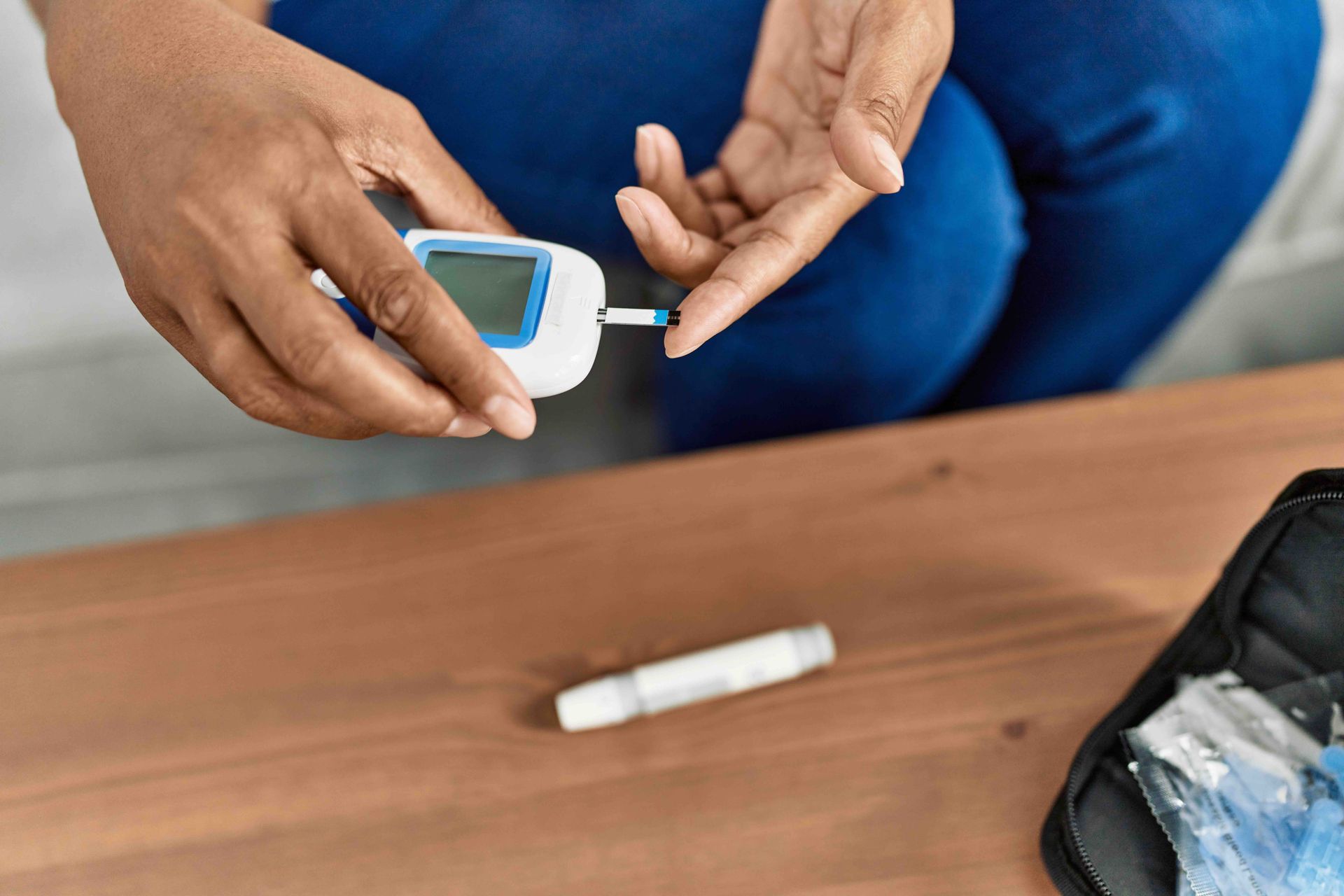The Scary Yet Fascinating Truths of Diabetes that You Need to Know
Diabetes is a chronic condition that significantly impacts how your body processes blood sugar (glucose), a vital energy source for your cells. The disease primarily affects insulin regulation, leading to elevated glucose levels in the bloodstream.
There are two main types of diabetes that you may be familiar with: Type I and Type II diabetes. While both types share specific characteristics, they exhibit critical differences in their causes, symptoms, and management strategies.

Type I Diabetes
Type I diabetes accounts for approximately 5% of all diagnosed cases of diabetes. It is an autoimmune condition where the body’s immune system mistakenly attacks and destroys the insulin-producing beta cells in the pancreas.
This results in little to no insulin production. Without insulin, glucose cannot enter the cells for energy, leading to high blood sugar levels. Although Type I diabetes is often diagnosed in children and young adults, it can develop at any age.
The exact cause of Type I diabetes remains unclear, but researchers believe that genetic predisposition, environmental factors, and possibly viral infections may trigger the onset of the disease.
Symptoms typically appear suddenly and can be severe. Patients may experience significant weight loss, increased thirst, frequent urination, and fatigue. Because of the lack of insulin, individuals with Type I diabetes require lifelong insulin therapy to manage their blood sugar levels effectively.
Type II Diabetes
Type II diabetes is the most common form of diabetes, accounting for about 90-95% of all cases. It primarily arises when the body becomes insulin resistant or the pancreas fails to produce enough insulin to maintain normal glucose levels.
Factors that contribute to the development of Type II diabetes include genetics, age, lifestyle choices, and environmental influences. Certain co-morbid conditions, such as high blood pressure, high cholesterol, and obesity, significantly increase the risk of developing Type II diabetes.
Unlike Type I, Type II diabetes tends to develop gradually and is often linked to lifestyle factors. Individuals may be unaware they have the condition until complications arise.
Symptoms may include increased thirst and hunger, frequent urination, fatigue, and blurry vision. Some individuals may also experience tingling or numbness in their hands and feet, a sign of nerve damage. Lifestyle modifications, including dietary changes, increased physical activity, and weight management, are crucial in managing Type II diabetes.
Signs and Symptoms of Diabetes
The symptoms of diabetes can vary depending on the type and individual circumstances. Here are some common signs and symptoms associated with both Type I and Type II diabetes:
- Frequent urination
High blood sugar levels can lead to increased urination as the body attempts to eliminate excess glucose. - Excessive thirst
Frequent urination can cause dehydration, leading to increased thirst. - Intense hunger
Despite eating adequately, individuals may feel constantly hungry due to the body’s inability to utilize glucose effectively. - Unexplained weight loss (Type I)
In Type I diabetes, the body begins to break down fat and muscle for energy due to a lack of insulin. - Tingling, pain, or numbness in hands or feet (Type II)
This symptom may indicate nerve damage or neuropathy due to prolonged high blood sugar levels. - Slow-healing sores
High blood sugar can impair circulation and the body’s healing processes. - Blurry vision
Elevated glucose levels can cause fluid to be pulled from the eyes' lenses, affecting vision. - Extreme fatigue
The body’s inability to utilize glucose can lead to persistent tiredness and low energy levels.
Long-Term Complications of Diabetes
If left unmanaged, diabetes can lead to severe complications over time. These include:
- Cardiovascular disease
Individuals with diabetes are at higher risk for heart disease and stroke due to damage to blood vessels and nerves. - Kidney damage (diabetic nephropathy)
High blood sugar can damage the kidneys’ filtering system, leading to kidney failure. - Eye damage (diabetic retinopathy)
Prolonged high blood sugar can damage the blood vessels in the retina, potentially leading to vision loss. - Nerve damage (neuropathy)
High blood sugar levels can injure nerves throughout the body, causing pain and loss of feeling, particularly in the extremities. - Foot complications
Poor circulation and nerve damage can lead to foot injuries and infections, sometimes resulting in amputations.
Prevention of Type II Diabetes
Preventing Type II diabetes involves adopting a healthy lifestyle. Here are some effective strategies for reducing your risk:
- Maintain a Healthy Weight
Excess body weight, particularly around the abdomen, increases the risk of developing Type II diabetes. Achieving and maintaining a healthy weight through diet and exercise is crucial. - Eat a Balanced Diet
Focus on a diet rich in whole grains, fruits, vegetables, lean proteins, and healthy fats. Limit processed foods, sugary beverages, and high-calorie snacks. - Stay Physically Active
Regular physical activity helps manage weight, lowers blood sugar levels, and improves insulin sensitivity. Aim for at least 150 minutes of moderate exercise per week, such as walking, swimming, or cycling. - Monitor Blood Sugar Levels
If you are at risk for diabetes, regular monitoring of blood sugar levels can help catch early signs of the disease and allow for timely interventions. - Manage Stress
Chronic stress can affect blood sugar levels and overall health. Engaging in stress-reducing activities such as yoga, meditation, or deep breathing can be beneficial. - Get Regular Check-ups
Regular visits to your healthcare provider can help monitor risk factors and catch potential issues early on. - Take Prescribed Medications
If you have other chronic conditions, such as hypertension or high cholesterol, take medications as prescribed and work closely with your healthcare provider to manage these conditions.
Fight Diabetes and Have Fun!
Staying physically active is crucial for everyone, especially for those managing diabetes. In Michigan, there are a variety of walks, camps, retreats, and activities designed to help individuals maintain an active lifestyle while also providing support and education about managing diabetes. Here’s a look at some of the options available in the Michigan area.

1. Walking Events
- Diabetes Awareness Walks
Many communities in Michigan host diabetes awareness walks, which serve as both a fundraising and educational opportunity. Organizations like the American Diabetes Association (ADA) often organize such events. These events typically take place in scenic parks and urban areas, offering participants a chance to enjoy nature while getting exercise and raising awareness for diabetes.
- Nature Trails
Michigan boasts numerous state parks and trails, such as the North Country Trail and Holly Recreation Area, which offer great walking paths. Walking in nature has additional mental health benefits, helping reduce stress and anxiety, which are vital for diabetes management.

2. Camps for Kids and Families
- Camp Midicha
This specialized camp in Michigan focuses on children with diabetes. Camp Midicha provides a safe environment where kids can learn about managing their condition while participating in traditional camp activities such as hiking, swimming, and sports. It encourages physical activity while also providing educational workshops that teach children and their families about diabetes management.
- Diabetes Youth Services
Various programs and camps focus on empowering youth with diabetes. These camps often include physical activities, educational sessions, and support networks, creating a comprehensive experience that fosters physical fitness and personal growth.
3. Retreats and Wellness Programs
- Diabetes Wellness Retreats
Several organizations offer weekend retreats focused on diabetes education and wellness in beautiful settings throughout Michigan. These retreats often include workshops on nutrition, exercise, and stress management, combined with physical activities like yoga, hiking, and guided nature walks.
Such retreats not only promote physical activity but also offer emotional support and community for participants. If you can’t find one at the moment, just joining a wellness retreat in Michigan might be a good way to kick start your physical fitness journey.
- Mindful Diabetes Retreats
Programs like these combine physical activities such as hiking or yoga with mindfulness practices. Participants learn how to manage stress and emotional eating through meditation and other techniques, which are crucial for maintaining healthy blood sugar levels.
4. Group Fitness Classes
- Diabetes-Friendly Fitness Programs
Many local gyms and community centers offer specialized fitness classes tailored for individuals with diabetes. These classes can include low-impact aerobics, strength training, and water aerobics. Local YMCAs often provide classes focused on cardiovascular health, helping participants improve their fitness in a supportive environment.
- Walking Clubs
Many communities have walking clubs that meet regularly for group walks, like People for Palmer Park in Detroit. This not only promotes physical activity but also fosters social interaction and support among members. The camaraderie of walking with others can help individuals stay motivated and accountable in their fitness journeys.
5. Recreational Activities
- Biking
Michigan’s extensive network of bike trails, such as the Iron Belle Trail, provides ample opportunities for cycling. Biking is a low-impact activity that can improve cardiovascular health and help with weight management. Local biking clubs often organize group rides, which can be a fun and social way to stay active.
- Kayaking and Canoeing
With its numerous lakes and rivers, Michigan is an ideal location for kayaking and canoeing. These activities not only offer a full-body workout but also provide an opportunity to enjoy the state's stunning natural beauty. Many local parks and recreation departments offer rentals and guided tours, making it accessible for individuals of all skill levels.
6. Seasonal Activities
- Snowshoeing and Cross-Country Skiing
In winter, Michigan transforms into a wonderland for outdoor enthusiasts. Many state parks and nature reserves, like Bald Mountain State Recreation Area, offer trails for snowshoeing and cross-country skiing. These activities are excellent for cardiovascular health and can be enjoyed at your own pace.
- Outdoor Yoga
Various parks in Michigan host outdoor yoga sessions, particularly during the summer months. Practicing yoga outdoors combines the benefits of physical activity with the calming effects of nature, making it a great option for those managing diabetes.
There are countless opportunities for individuals with diabetes to stay physically active through walks, camps, retreats, and other recreational activities. These programs not only promote physical health but also encourage social interaction and emotional support, which are essential for effective diabetes management.
By participating in these activities, individuals can lead a fulfilling, active lifestyle while effectively managing their condition. Whether through walking events, specialized camps for children, group fitness classes, or seasonal outdoor activities, Michigan offers diverse options that cater to various interests and fitness levels.
Key Takeaways
Understanding diabetes, including its types, symptoms, and preventive measures, is essential for effective management and reducing the risk of complications. While Type I diabetes requires lifelong management and insulin therapy, Type II diabetes can often be prevented or managed through lifestyle changes. By prioritizing a healthy lifestyle, staying informed about your health, and maintaining regular check-ups, you can take proactive steps to reduce your risk of diabetes and live a healthier life.
The Medical Center You Can Count on For Diabetic Care and Screening in Michigan
Call us today at (616) 374-8881 for general care, senior diabetic care, and diabetic screening for men and women. Let’s not forget that both types of diabetes can affect children, too. If you live in Lake Odesa or nearby, please don’t hesitate to book an appointment online today.

Your Family’s Health Is Our Priority
Your wellness matters to us. Take the next step in your care today.
1020 4th Ave
Lake Odessa, MI 48849
oFFICE HOURS
- Mon - Tue
- -
- Wed - Thu
- -
- Fri - Sun
- Closed
AFTER HOURS EMERGENCY CONTACT
1020 4th Ave
Lake Odessa, MI 48849
oFFICE HOURS
- Mon - Tue
- -
- Wed - Thu
- -
- Fri - Sun
- Closed
AFTER HOURS EMERGENCY CONTACT
All Rights Reserved
FAMILY MEDICAL CENTER
website designed by SPECK DESIGNS
All Rights Reserved | FAMILY MEDICAL CENTER
website designed by SPECK DESIGNS




